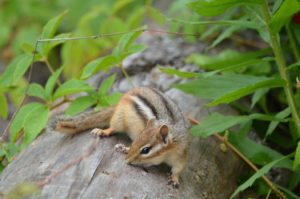
Wildlife
Why understanding animal behaviour is key for biodiversity conservation
By understanding why animals do what they do, we can better protect them while making people care
- 1906 words
- 8 minutes
Kids

Often nicknamed “sea parrots” or “clowns of the sea”, Atlantic puffins are a well-loved seabird the breed in large colonies along cliffs or offshore islands.
Common name: Atlantic puffin
Scientific name: Fratercula artica
Type: Bird
Diet: Carnivore
Group name: Colony
Average weight: 500 grams
Average height: 18 centimetres
COSEWIC Status: No status
Despite having wings, the puffin is a poor flier. It must flap its wings 300 to 400 times per minute to stay airborne.
The Atlantic puffin is the official bird of Newfoundland and Labrador and the smallest species of puffin. This pigeon-sized seabird’s black head, back and wings contrast sharply with its white face and underside. Its most notable features are its vibrant orange feet and the orange, yellow and bluish plates on its bill during breeding season. If you were to spot a puffin in the winter, however, you’d hardly recognize it. At sea, they shed their colourful bill plates and their feet turn a greyish colour.
As a seabird, the puffin spends much of its time in the water, diving and scooping up as many fish as it can. Its body and wings are streamlined to allow for fast swimming. A puffin’s tongue and upper mouth have backward-pointing spines, which help it pin down prey while it dives for more food. A puffin can hold its breath for up to one minute underwater and can carry an average of 10 fish in its beak, but one time, a puffin was spotted carrying a record-breaking 62 fish!
Not only is the puffin a poor flier, but it also has trouble landing gracefully and often crashes and tumbles into the sea or onto the grass.
Its diet consists of small fish, such as capelin, herring and hake. Other fishes, as well as crustaceans, squid, and marine worms, are eaten when options are limited.
The puffin spends winters at sea and migrates to coastal areas and islands in the North Atlantic every spring and summer for breeding. They dig burrows for nests and usually return to the same spot with the same mate year after year. Sixty per cent of the population breeds on islands off of Newfoundland.
Are you passionate about Canadian geography?
You can support Canadian Geographic in 3 ways:

Wildlife
By understanding why animals do what they do, we can better protect them while making people care

Travel
From South African penguins and Canadian bears to Australian wombats and Bolivian pumas, Robin Esrock introduces inspiring wildlife sanctuaries where volunteers make all the difference

Kids
The massive North Atlantic Right Whale is Canada's “true whale of the ice.” …

Kids
Spending a majority of their time on the seafloor, the Atlantic cod is a popular food fish that can be found contiguously along the east coast.